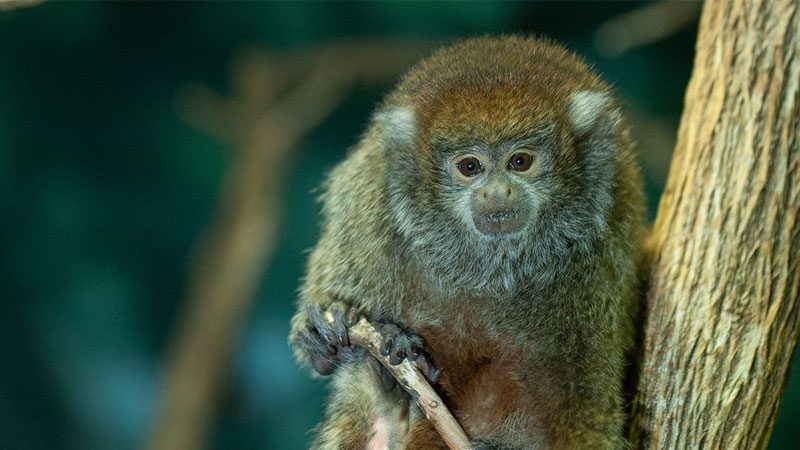Welcome to Lincoln Park Zoo’s new web app! Share your feedback

Bolivian Gray Titi Monkey
Helen Brach Primate House
Helen Brach Primate House is open 10 a.m.-4:30 p.m. Monday through Friday and 10 a.m.-6:30 p.m. Saturdays and Sundays.
Did You Know?
- Bolivian gray titi monkeys inhabit humid, tropical forests and swamps in the southern portion of the Amazon River basin and can be found along rivers and lakeshores. They rarely come to the forest floor.
- Titi monkeys engage in a behavior called tail twining where they wrap their tails around another’s to reinforce social bonds, much like how humans hold hands.
- These primates make more complex and varied sounds than many other neotropical monkey species. Pairs may duet with other pairs at dawn or make territorial calls that can be heard a kilometer away.
Don’t See the Animals?
Why aren’t animals visible at all times? To promote positive animal welfare, we provide animals with choices. They can choose to spend time in areas that are out of public view.

Take an Animal Home with You
Overview
Scientific Name: Callicebus donacophilus
Class: Mammals
Diet: Fruit (also, leaves, seeds, and insects)
Range: Bolivia and western Brazil
Endangered Status: Least Concern
More Information
Bolivian gray titi monkeys have a chestnut-brown coat, a non-prehensile gray tail, and a gray face. They measure about 13 inches long and weigh an average of 2.2 pounds. Males and females look alike. Like other primates, they groom one another to reinforce social bonds.
They are arboreal animals that form small, territorial family groups made up of one monogamous adult pair and several offspring. Females may give birth to a single offspring every year after a 160-day gestation, typically during November and March. Males help care for young by carrying them when females are not nursing. The young are weaned at about eight months of age. Bolivian gray titi monkeys live in remote areas without major threats.
